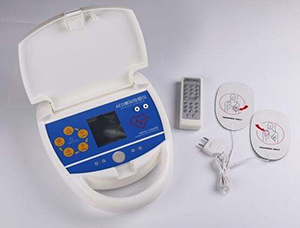In the field of medical emergency, defibrillators are one of the key life-saving devices, capable of resetting the electrical activity of the heart by releasing a certain amount of electricity to help restore a normal heartbeat rhythm to patients who have gone into cardiac arrest due to arrhythmias such as ventricular fibrillation (VF) or ventricular tachycardia (VT). However, for medical personnel, mastering accurate defibrillation technology requires not only deep theoretical knowledge, but also repeated practical operations. It is in this context that the analog defibrillator came into being, which has become a bridge connecting theory and practice, making defibrillation technology from books to reality, from theory to practice.

Various scenarios and parameter Settings in real defibrillation process are simulated, which provides a safe and risk-free practice platform for medical staff. It not only simulates different types of arrhythmia waveforms, allowing the operator to determine whether defibrillation is needed and select the appropriate energy level according to the ECG waveform displayed on the screen, but also simulates the correct placement and pressing of the defibrillation electrode plate, ensuring that the operator can quickly and accurately perform defibrillation operations in emergency situations.
Training with a simulated defibrillator allows healthcare professionals to practice repeatedly in a stress-free environment to deepen their understanding of defibrillation principles, operational processes and precautions. This hands-on learning approach not only improves the operational skills of medical staff, but also enhances their self-confidence and resilience in the face of real emergencies.
In short, the appearance of analog defibrillators has greatly promoted the popularization and improvement of defibrillation technology. It allows medical staff to continuously hone their skills in a safe environment, transform theoretical knowledge into practical capabilities, and contribute to saving more lives. With the continuous progress of medical technology and the increasing perfection of simulation training equipment, we have reason to believe that medical emergency will be more efficient, safe and reliable in the future.
